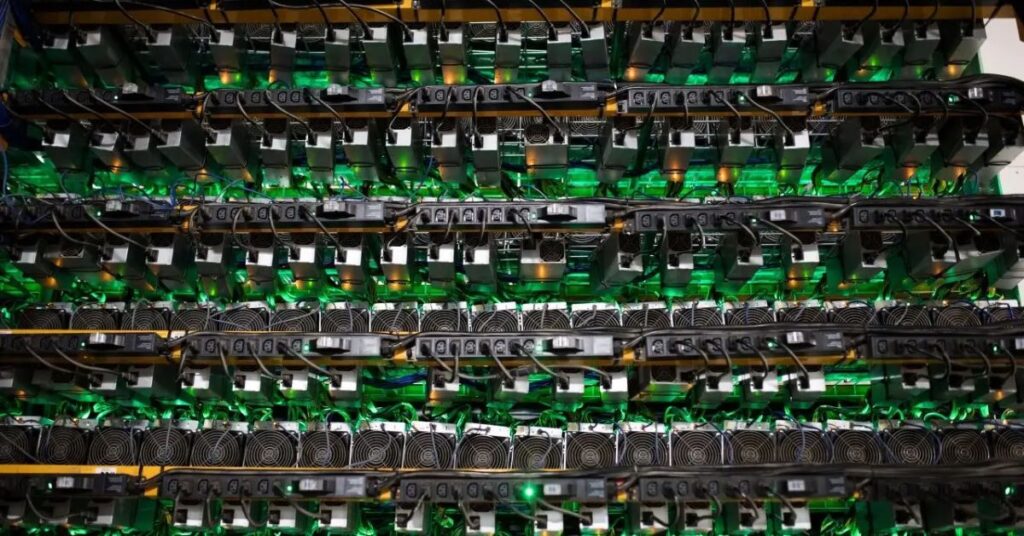Are you intrigued by the allure of cryptocurrencies and the promise they hold for the future of finance? If so, you’ve likely encountered the term cryptocurrency mining. But what exactly is it, and how does it work? In this comprehensive guide, we’ll delve into the fascinating world of cryptocurrency mining, exploring everything from its basics to its significance in the digital economy.
Contents
What is Cryptocurrency Mining?
Cryptocurrency mining is the process by which new digital currencies are created and transactions are verified and added to a blockchain. Essentially, miners use powerful computers to solve complex mathematical puzzles, a task that requires significant computational power. Once a miner successfully solves a puzzle, they add a new block of transactions to the blockchain and are rewarded with a certain amount of the cryptocurrency being mined.
How Does Cryptocurrency Mining Work?
At the heart of cryptocurrency mining is a distributed peer-to-peer network of computers, known as nodes. When a transaction occurs on the network, it is broadcast to all nodes for verification. Miners, who are part of this network, compete to solve a mathematical puzzle based on the transaction data. The first miner to solve the puzzle validates the transaction and adds it to a new block on the blockchain.
Why is Cryptocurrency Mining Necessary?
Cryptocurrency mining serves several crucial functions within the digital ecosystem. Firstly, it ensures the security and integrity of the blockchain by validating and verifying transactions.
Secondly, mining is the mechanism through which new coins are introduced into circulation, thus regulating the supply of cryptocurrencies. Lastly, mining incentivizes participants to contribute their computational power to the network, thereby maintaining its decentralized nature.

Types of Cryptocurrency Mining
There are primarily two types of cryptocurrency mining: proof-of-work (PoW) and proof-of-stake (PoS).
Proof-of-Work (PoW): This is the original method of cryptocurrency mining, pioneered by Bitcoin. In a PoW system, miners compete to solve complex mathematical puzzles using computational power. The first miner to solve the puzzle is rewarded with newly minted coins and transaction fees.
Proof-of-Stake (PoS): In a PoS system, validators are chosen to create new blocks and validate transactions based on the amount of cryptocurrency they hold and are willing to “stake” as collateral. PoS is considered more energy-efficient than PoW since it doesn’t require vast amounts of computational power.
Hardware and Software for Cryptocurrency Mining
To participate in cryptocurrency mining, you’ll need specialized hardware and software tailored for the task.
Hardware: The most common mining hardware includes ASIC (Application-Specific Integrated Circuit) miners for PoW cryptocurrencies like Bitcoin and GPUs (Graphics Processing Units) for PoW cryptocurrencies like Ethereum. These devices are optimized for performing the complex calculations required for mining.
Software: Mining software acts as the interface between your hardware and the cryptocurrency network. Popular mining software includes CGMiner and BFGMiner for ASIC miners and Claymore’s Dual Miner and PhoenixMiner for GPU miners. These programs allow miners to configure their hardware, join mining pools, and monitor their mining operations.
Mining Pools
Due to the increasing difficulty of mining and the specialized hardware required, many miners choose to join mining pools. Mining pools are groups of miners who combine their computational power to increase their chances of solving blocks and receiving rewards. When a pool successfully mines a block, the rewards are distributed among its members based on their contributed hash power.
Challenges and Considerations
While cryptocurrency mining can be lucrative, it’s not without its challenges and considerations.
Energy Consumption: One of the most significant criticisms of cryptocurrency mining is its energy consumption. The computational power required for mining consumes vast amounts of electricity, leading to concerns about its environmental impact.
Hardware Costs: Mining hardware can be expensive, particularly for ASIC miners. Additionally, the constant arms race for more powerful hardware means that older models quickly become obsolete.
Regulatory Uncertainty: The regulatory landscape surrounding cryptocurrency mining varies from country to country and is subject to change. Miners must stay informed about relevant regulations and comply with them to avoid legal issues.
Conclusion
Cryptocurrency mining plays a vital role in the creation and operation of digital currencies, serving as the backbone of their decentralized networks. While it presents profit opportunities, it also comes with challenges such as energy consumption and regulatory uncertainty. By understanding the fundamentals of mining and staying informed about developments in the industry, you can navigate this dynamic landscape and harness its potential.